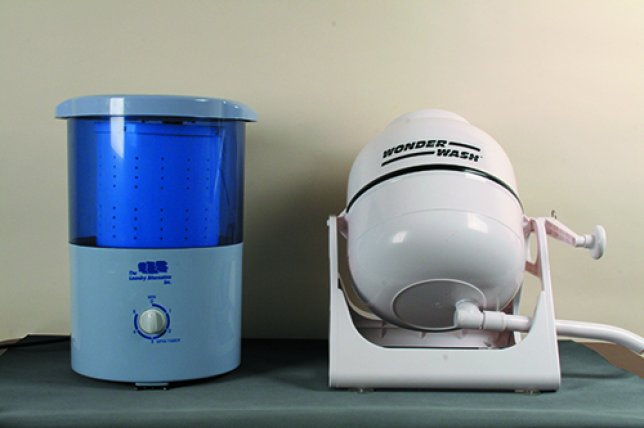What did we think of the mop bucket and spinner as a laundry machine? It made it neat and easy to launder single items in a repeatable way for testing. In fact, it was a good deal easier on the hands than wringing. However, you can only spin one item at a time, and as a result it was no faster or drier.
Weve also tested Laundry Alternatives Wonder Wash, a modern take on a hand-crank bucket-spinner that dates back to the previous century (See PS March 2007). We also tested their compact plug-in spinner. We tried variations on placing the laundry in a net bag and walking on it; we often laundered a few things at marina showers by tossing them on the shower floor and marching around on them while showering, followed by a good rinse. It worked, but not a miracle-solution.
We still subscribe to the bucket and plunger school. Let the laundry soak for 30 minutes (hot water helps) and then churn away for 5 minutes. There are many variations.

Were dating ourselves, but we grew up with a wringer washer, and as a budding engineer, one of our first jobs was fixing the thing when it was overloaded by feeding too much at once. The extreme pressure between the rollers reduced the retained water by about 30 percent, making rinsing more efficient and drying faster, but they can also be hard on clothes. All zippers must be closed. Delicate items should be placed inside T-shirts. Buttons must be folded in or they will crack. They still make clamp-on hand wringers (see the Callinger wringer pictured above), both for people that like it old school or have a cabin, and for car wash towels. Theyre not going away.






































